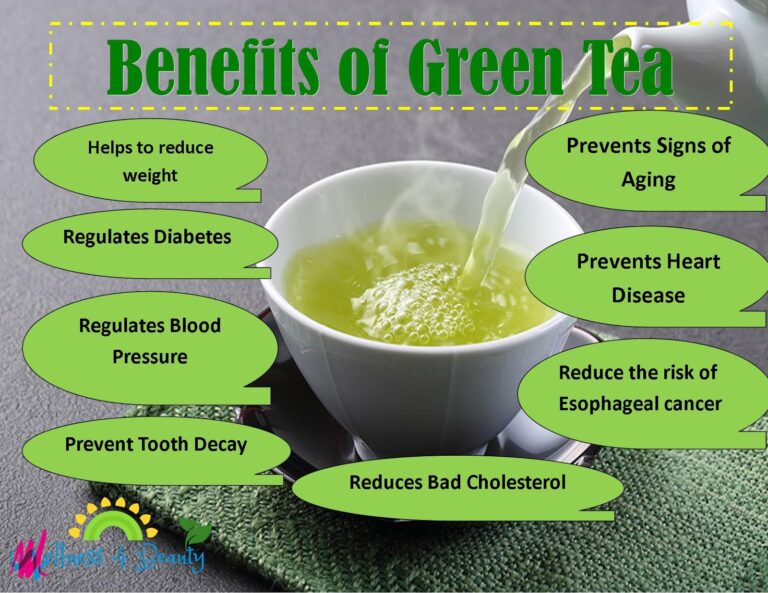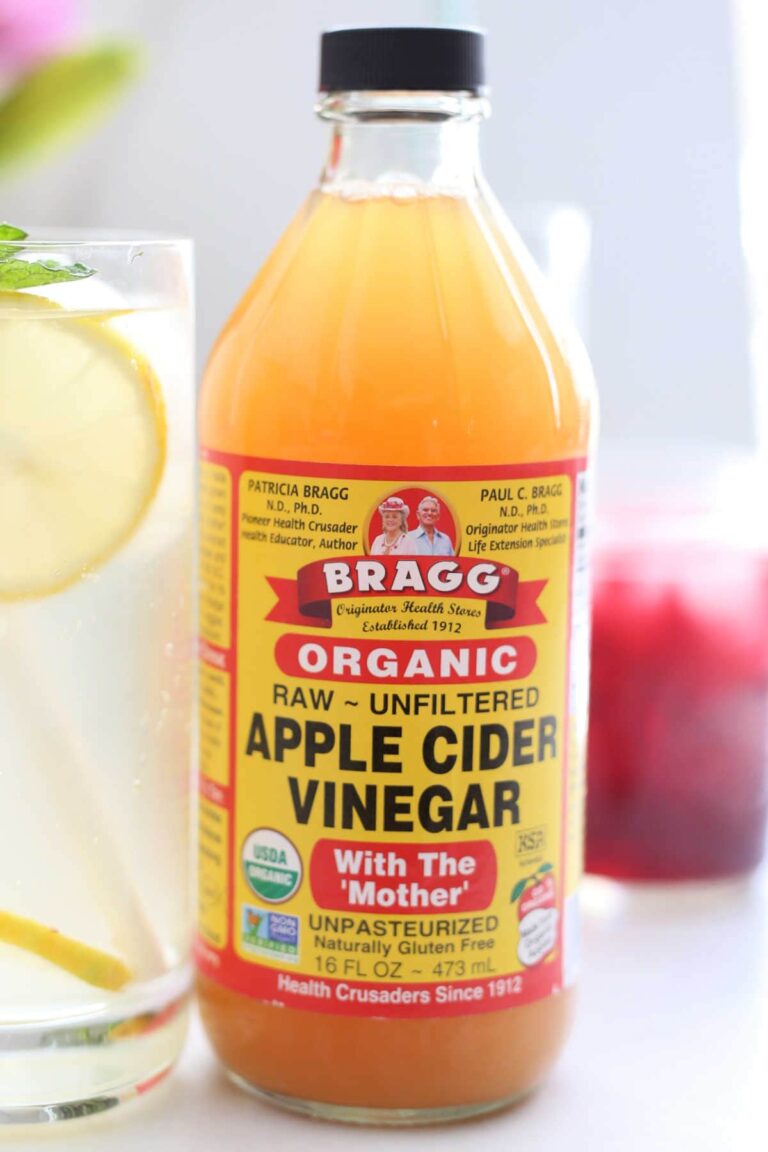Fueling Your Best Self: A Beginner’s Guide to Whole Foods and Balanced Meals – A Journey of Rediscovery
In a world saturated with fleeting diets, conflicting nutritional advice, and the siren song of convenience foods, the quest for optimal health can often feel like navigating a dense, bewildering forest. We are, many of us, already knowledgeable. We understand the basic tenets: eat your vegetables, limit processed sugars, drink water. Yet, despite this baseline awareness, a profound sense of disconnection often persists – a chasm between what we know we should do and what we consistently do. This isn’t just a guide; it’s an invitation to embark on a journey, a narrative woven from the threads of ancient wisdom and modern science, designed to re-ignite your relationship with food and unlock the profound potential of fueling your best self.
This story begins not with deprivation, but with rediscovery. It’s about shifting from a mindset of restriction to one of abundance, from viewing food as mere fuel to understanding it as a vibrant, life-giving force capable of transforming every facet of our existence. For the discerning mind, the challenge lies not in absorbing new facts, but in integrating existing knowledge into a cohesive, sustainable, and deeply personal practice.
Chapter 1: The Genesis of Wholeness – Beyond the Label
The term "whole foods" has become ubiquitous, almost a cliché. But for the knowledgeable individual, the true essence of "whole" extends far beyond a simple label on a package. It speaks to an integrity, an inherent wisdom embedded within nature’s design.
Imagine, if you will, the journey of an apple. From a blossom on a tree, drawing nutrients from the soil, converting sunlight into energy, it grows. It ripens, imbued with vitamins, minerals, fiber, and a complex array of phytonutrients – compounds that protect the plant and, in turn, offer protective benefits to us. When we bite into that apple, we are consuming a complete package, a symphony of interconnected elements working in concert. The fiber slows the absorption of natural sugars, preventing a sharp spike in blood glucose. The antioxidants protect our cells. The water content hydrates. This is the story of a whole food: a masterpiece of biological engineering.
Now, contrast this with an "apple-flavored" snack bar. Its ingredients list might include "apple powder," "apple juice concentrate," but it’s likely a Frankenstein’s monster of refined sugars, isolated starches, artificial flavors, and preservatives. The original apple has been disassembled, stripped of its most valuable components, and reassembled into something superficially resembling its origin, yet fundamentally devoid of its life-giving synergy.
The Deeper Meaning of "Whole":
- Nutrient Density: Whole foods are packed with a higher concentration of vitamins, minerals, and phytonutrients per calorie. This isn’t just about meeting RDAs; it’s about providing the body with the building blocks and catalysts for optimal cellular function.
- Fiber Matrix: This often-overlooked hero in whole foods (especially plants) is critical. It aids digestion, feeds our beneficial gut bacteria (the microbiome, now recognized as a second brain), regulates blood sugar, and promotes satiety. Processed foods are largely devoid of this crucial element.
- Bioavailability and Synergy: Nutrients in whole foods aren’t isolated; they exist in complex matrices that enhance their absorption and utilization. The vitamin C in an orange works synergistically with its bioflavonoids. The iron in spinach is better absorbed when paired with vitamin C-rich foods. This intricate dance is lost when nutrients are extracted and consumed in isolation.
- Reduced Inflammatory Load: Ultra-processed foods, high in refined sugars, unhealthy fats, and artificial additives, are pro-inflammatory. Whole foods, rich in antioxidants and anti-inflammatory compounds, actively support the body’s natural defense mechanisms.
Key Categories and Their Narratives:
- Vibrant Vegetables and Fruits: These are the poets of the plate, telling stories through their colors, each pigment (anthocyanins, carotenoids, chlorophyll) signifying a different suite of powerful antioxidants and phytonutrients. They provide essential vitamins, minerals, and fiber, and their high water content contributes to hydration and satiety. Think beyond the usual suspects; explore cruciferous wonders, leafy greens, and exotic berries.
- Wholesome Grains and Legumes: Often misunderstood, these are the steady anchors of our diet. Whole grains (oats, quinoa, brown rice, farro) retain their bran, germ, and endosperm, providing complex carbohydrates for sustained energy, B vitamins, and fiber. Legumes (beans, lentils, chickpeas) are powerhouses of plant-based protein, fiber, and an impressive array of minerals like iron and magnesium. They are also incredibly versatile and economical.
- Lean Proteins: The architects of our bodies, proteins are essential for muscle repair, hormone production, enzyme function, and satiety. Focus on quality sources: wild-caught fish, pastured poultry, grass-fed meats (if consumed), eggs, and a diverse range of plant-based proteins from legumes, nuts, and seeds.
- Healthy Fats: The unsung heroes, fats are crucial for hormone production, nutrient absorption (especially fat-soluble vitamins A, D, E, K), brain health, and providing concentrated energy. Embrace avocados, nuts, seeds, olive oil, and fatty fish. Dispelling the myth that all fats are bad is a critical step in this journey of rediscovery.
Chapter 2: The Art of Balance – Beyond Ratios
For the knowledgeable individual, the concept of a "balanced meal" can evoke images of precise macronutrient ratios or restrictive portion control. Yet, the true art of balance transcends mere arithmetic; it’s a dynamic, intuitive dance between nutrients, flavors, and personal needs. It’s about creating a harmonious culinary narrative on your plate that tells a story of sustained energy, deep satisfaction, and optimal cellular function.
The Symphony of Macronutrients (Revisited):
We understand the roles of carbohydrates, proteins, and fats. But the story deepens when we consider their quality and synergy within a meal.
- Carbohydrates: The Energy Storyteller: Not all carbs tell the same story. Simple sugars offer a fleeting burst, often followed by a crash, like a quickly burning fuse. Complex carbohydrates from whole grains, legumes, fruits, and vegetables, rich in fiber, tell a story of sustained energy release. They are digested slowly, providing a steady supply of glucose, preventing energy dips and mood swings. Their fiber content also feeds the gut microbiome, influencing everything from immunity to mood.
- Proteins: The Builder’s Narrative: Proteins are not just for muscles; they are the fundamental building blocks for enzymes, hormones, and neurotransmitters. A sufficient intake of high-quality protein at each meal contributes significantly to satiety, helps stabilize blood sugar, and supports muscle maintenance and growth. For a knowledgeable audience, the concept of amino acid profiles and the importance of complete proteins (or complementary plant proteins) is already familiar, but reinforcing their role in the daily narrative of cellular repair and regeneration is vital.
- Fats: The Conductor of Vitality: Healthy fats are not merely calorie sources; they are essential for nutrient absorption (especially fat-soluble vitamins A, D, E, K), hormone production, brain health, and reducing inflammation. They also contribute profoundly to satiety and the palatability of a meal. The story of fats is complex, moving beyond the simple saturated/unsaturated dichotomy to embrace the nuances of omega-3s, monounsaturated fats, and the avoidance of inflammatory trans fats and excessive omega-6s from highly processed seed oils.
Beyond the Macros: The Micro-Narrative and the Plate’s Story:
The true magic of a balanced meal lies in the intricate interplay of micronutrients (vitamins and minerals) and phytonutrients, facilitated by the macroscopic elements. These are the supporting characters that make the main plot truly compelling.
- Micronutrients: These are the silent workhorses, catalysts for thousands of biochemical reactions in the body. A varied diet of whole foods ensures a broad spectrum, preventing deficiencies that can subtly erode energy, immunity, and cognitive function.
- Phytonutrients: These plant-derived compounds, responsible for the vibrant colors, aromas, and flavors of fruits and vegetables, are potent antioxidants and anti-inflammatory agents. They don’t just protect the plant; they protect us, offering benefits that extend to disease prevention, cellular repair, and even gene expression. Their story is one of profound cellular intelligence.
Crafting Your Culinary Canvas – The Balanced Plate:
Instead of rigid rules, envision your plate as a canvas, telling a story of diverse nutrients. A practical framework for a balanced meal often looks like this:
- Half a Plate of Non-Starchy Vegetables: These are your vibrant greens, colorful peppers, broccoli, cauliflower, carrots, etc. They provide fiber, water, and a wealth of micronutrients and phytonutrients with minimal calories.
- A Quarter Plate of Lean Protein: Fish, chicken, legumes, tofu, tempeh, eggs. This ensures satiety and provides the necessary building blocks for your body.
- A Quarter Plate of Complex Carbohydrates: Quinoa, brown rice, sweet potato, whole grain pasta, oats. These provide sustained energy and additional fiber.
- A Healthy Fat Source (a thumb-sized portion): Avocado, nuts, seeds, a drizzle of olive oil. Crucial for nutrient absorption, hormone health, and satiety.
This visual guide is a starting point, a narrative framework. Listen to your body, experiment with different combinations, and allow your intuition to guide your choices. Balance is not static; it adapts to your activity level, stress, and unique physiological needs.
Chapter 3: Cultivating Your Culinary Narrative – The Practice of Wholeness
Knowing is one thing; doing is another. The journey to fueling your best self requires more than intellectual understanding; it demands practical application, a willingness to engage with food on a deeper, more intentional level. This chapter is about weaving the principles of whole foods and balanced meals into the fabric of your daily life, transforming knowledge into embodied wisdom.
The Mindset Shift: From Diet to Lifestyle Story:
The first step in this practical integration is a fundamental shift in perspective. Discard the concept of "diet" as a temporary fix. Embrace the idea of "lifestyle" – a continuous, evolving relationship with food that nourishes your body, mind, and spirit. This narrative is one of self-care, empowerment, and mindful choices, not deprivation.
Planning and Preparation: The Strategic Narrative:
Even the most knowledgeable individual can fall prey to convenience when unprepared. Strategic planning is your greatest ally.
- The Weekly Blueprint: Dedicate time once a week to plan your meals. Consider your schedule, preferences, and nutritional goals. This doesn’t need to be rigid; a general outline provides direction.
- The Grocery Store Adventure: Approach grocery shopping as an exploration. Focus on the perimeter of the store, where fresh produce, lean proteins, and dairy (if consumed) reside. Read labels critically, seeking out foods with minimal ingredients, recognizable names, and low added sugars.
- Meal Prepping: The Gift of Time: Cooking in batches saves invaluable time during busy weekdays. Prepare staples like cooked grains, roasted vegetables, and grilled proteins. Wash and chop fruits and vegetables for easy snacks or meal additions. This pre-emptive action reduces the likelihood of resorting to less nutritious options.
Cooking at Home: The Creative Narrative:
Cooking is not a chore; it’s an act of creation, an intimate connection with your food. You control the ingredients, the quality, and the flavors.
- Simplify, Don’t Complicate: You don’t need gourmet skills. Master a few basic cooking techniques: roasting vegetables, grilling proteins, making simple vinaigrettes, and simmering wholesome soups or stews.
- Flavor Profiles: Your Culinary Palette: Explore herbs, spices, citrus, and vinegars to add depth and excitement without relying on excessive salt, sugar, or unhealthy fats. Learn about different cuisines that naturally emphasize whole foods, like Mediterranean, East Asian, or Latin American.
- Batch Cooking: Make extra. Leftovers are your best friend for quick lunches or dinners. Transform them into new dishes – roasted vegetables become a frittata, leftover chicken becomes a salad.
Mindful Eating: The Sensory Narrative:
In our fast-paced world, eating often becomes a secondary activity, a mindless act performed while scrolling or working. Mindful eating is about re-engaging with the sensory experience of food.
- Slow Down: Take time to savor each bite. Chew thoroughly.
- Engage Your Senses: Notice the colors, aromas, textures, and flavors.
- Listen to Your Body: Pay attention to hunger and fullness cues. Eat when you’re hungry, stop when you’re comfortably full, not stuffed. This re-establishes an intuitive connection with your body’s wisdom.
- Eliminate Distractions: Turn off screens, put away your phone. Make eating a primary, focused activity, even if just for a few minutes.
Listening to Your Body: The Personal Narrative:
The ultimate guide on this journey is your own body. Bio-individuality is a powerful concept for the knowledgeable. What works optimally for one person may not for another.
- Experiment and Observe: Pay attention to how different foods make you feel. Do you have sustained energy? Are you easily digested? Do you feel light and vibrant, or sluggish and bloated?
- Keep a Journal (Optional): If you’re exploring new foods or trying to pinpoint sensitivities, a food and symptom journal can provide valuable insights.
- Embrace Flexibility: Life happens. There will be times when you can’t eat perfectly. This is not a failure; it’s an opportunity for grace and resilience. One meal or one day off track does not derail your entire journey. Return to your intentional choices with compassion.
Chapter 4: The Ripple Effect – Beyond the Plate
The story of fueling your best self with whole foods and balanced meals extends far beyond the confines of your digestive system. It creates a ripple effect, touching every aspect of your being and even influencing the world around you. For the knowledgeable audience, understanding these broader implications solidifies the profound wisdom of this approach.
The Symphony of Well-being:
- Cognitive Clarity and Mental Acuity: Your brain, a demanding organ, thrives on a steady supply of glucose from complex carbohydrates, essential fatty acids (especially omega-3s), and a rich array of micronutrients. A diet centered on whole foods supports neuroplasticity, improves focus, enhances memory, and can even stabilize mood. The gut-brain axis, a recognized highway of communication, means that a healthy gut (nourished by fiber-rich whole foods) directly translates to a healthier mind.
- Sustained Energy and Vitality: Gone are the energy crashes associated with refined sugars and processed foods. Whole foods provide a consistent, slow-release energy source, empowering you to navigate your day with sustained vigor, whether tackling complex projects, engaging in physical activity, or simply enjoying life’s moments.
- Emotional Resilience: The link between diet and mental health is increasingly clear. Nutrient deficiencies can exacerbate anxiety and depression. Conversely, a diet rich in fruits, vegetables, whole grains, and healthy fats provides the precursors for neurotransmitters like serotonin and dopamine, fostering a sense of calm, well-being, and emotional stability.
- Enhanced Sleep Quality: A balanced diet helps regulate circadian rhythms and supports the production of sleep-inducing hormones. Avoiding heavy, processed meals close to bedtime, and opting for lighter, nutrient-dense options, can profoundly improve the depth and restorative quality of your sleep.
- Robust Immunity: Your immune system is your body’s frontline defense. A diverse intake of vitamins (especially C, D, E), minerals (zinc, selenium), and phytonutrients (from colorful plants) acts as an arsenal, strengthening your body’s ability to ward off illness and recover more effectively. The gut, home to a significant portion of the immune system, is directly nourished by whole foods.
- Disease Prevention and Longevity: This is perhaps the most profound narrative. A lifelong commitment to whole foods and balanced meals is one of the most powerful preventative medicines available. It significantly reduces the risk of chronic diseases such as heart disease, type 2 diabetes, certain cancers, and neurodegenerative conditions. It’s an investment in a longer, healthier, and more vibrant life.
The Wider World: A Story of Sustainability:
Beyond personal health, the choices we make on our plates have a broader impact. A focus on whole foods, locally sourced where possible, often aligns with more sustainable agricultural practices. It reduces demand for highly processed, resource-intensive foods that contribute disproportionately to environmental degradation. It’s a quiet act of stewardship, an acknowledgment of our interconnectedness with the planet.
Conclusion: The Unfolding Narrative of Your Best Self
This journey is not about achieving perfection overnight. It is an unfolding narrative, a continuous process of learning, adapting, and growing. "Fueling Your Best Self" is not a destination but a dynamic state of being, constantly nurtured by conscious choices.
You, the knowledgeable audience, already possess the intellectual framework. The invitation now is to embody that knowledge, to allow it to permeate your daily practices, to transform your relationship with food from a transactional exchange to a profound, nurturing partnership.
Embrace the vibrant colors, the diverse textures, the intricate flavors that whole foods offer. Cultivate the mindful awareness that allows you to truly listen to your body’s innate wisdom. See each meal as an opportunity to nourish, to heal, to energize, and to celebrate the incredible machinery that is your being.
This isn’t just about what you eat; it’s about how you live, how you feel, and how you engage with the world. It’s about building a foundation of vitality that empowers you to pursue your passions, weather life’s challenges, and ultimately, live out the fullest, most authentic story of your best self. The fork is in your hand; the next delicious chapter awaits.







